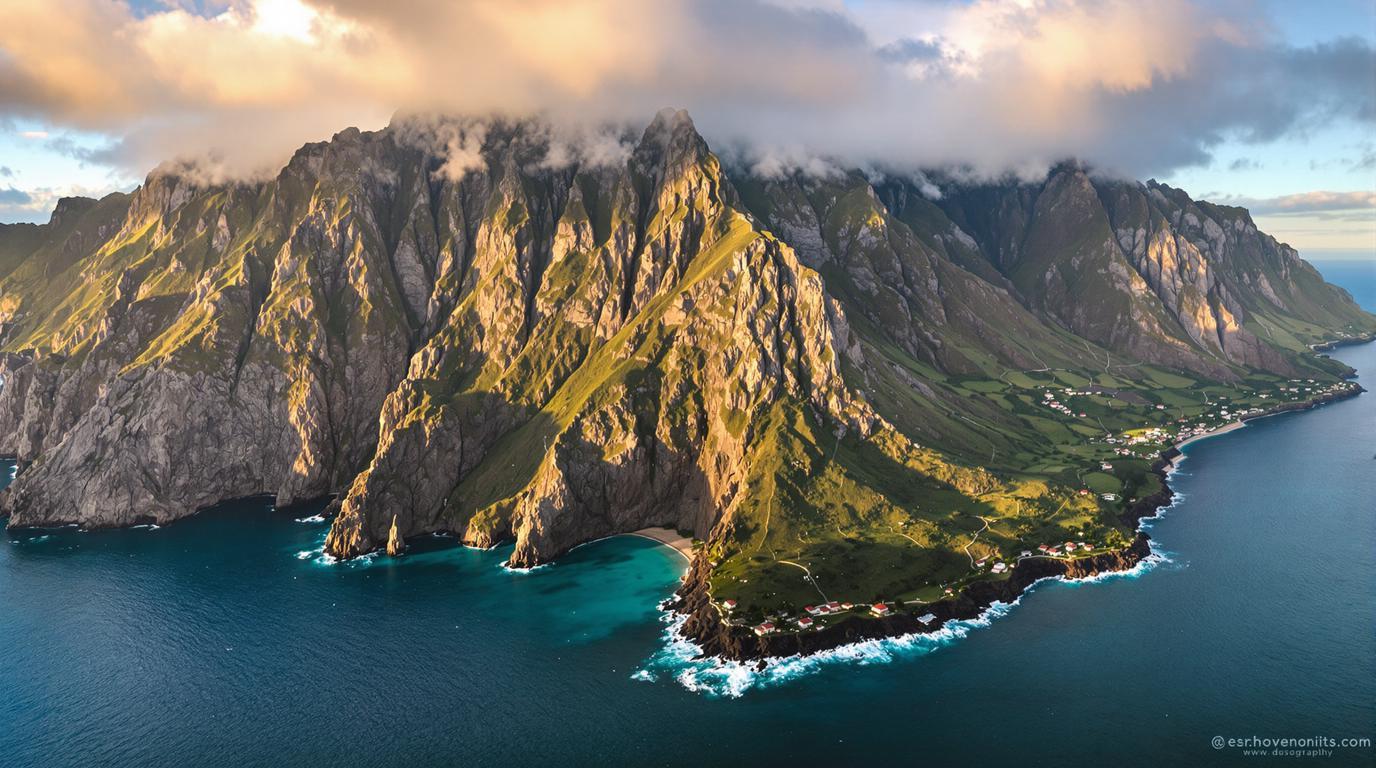The first glimpse of São Jorge from the ferry is unforgettable—a 33-mile volcanic blade slicing through the Atlantic waves, crowned with clouds and plunging dramatically into the sea. Unlike its more famous Azorean neighbors, this remote Portuguese island remains largely undiscovered, offering a raw, untamed beauty that has earned it the nickname “The Spine of the Dragon.”
The geological wonder that rivals Hawaii’s coastline
São Jorge’s dramatic silhouette wasn’t formed by chance. Repeated volcanic eruptions created this sword-shaped ridge, which drops vertically into the ocean, forming some of the Atlantic’s most spectacular cliffs—reaching heights of over 2,300 feet in places. These imposing walls are broken only by the island’s most distinctive feature: over 70 fajãs.
What exactly is a fajã?
These small, flat areas of land formed by ancient landslides or lava flows create their own microclimates at the cliff bases. Local guide Manuel Silveira explains:
“Each fajã is like its own tiny world. Some have their own coffee plantations, others have natural swimming pools, and each has its own unique plants and weather patterns.”
It’s this geological quirk that gives São Jorge its incredible biodiversity.
The hidden treasure of Caldeira de Santo Cristo
Perhaps the most renowned fajã is Caldeira de Santo Cristo, accessible only by foot or boat. This isolated coastal community houses a pristine lagoon that produces Europe’s only wild clams. The four-hour hike from Serra do Topo offers scenery reminiscent of Scotland’s remote isles, with mist-covered peaks giving way to panoramic ocean views.
Europe’s most unexpected coffee destination
In Fajã dos Vimes, you’ll find something that defies geographical logic: coffee plantations—the northernmost in Europe. The unique microclimate allows arabica coffee to flourish here, despite being well outside typical growing regions. “Our coffee tastes different from anything else,” says Maria Teixeira, a fifth-generation producer. “It carries the Atlantic saltiness and volcanic soil in every sip.”
A cheese that rivals the world’s finest
São Jorge’s culinary crown jewel is its namesake cheese. Produced from the milk of cows that graze on mineral-rich pastures, Queijo São Jorge has been crafted since the 15th century. This semi-hard cheese ages for 3-7 months, developing complex flavors that have earned it protected designation status—similar to Portugal’s other culinary treasures.
The hiking paradise above the clouds
The island’s central spine, culminating at Pico da Esperança (3,455 feet), offers trails that rival those of remote Irish landscapes. Often above the cloud line, hikers experience the surreal sensation of walking between two worlds—misty mountain tops and the vast Atlantic below.
The island’s surprising wildlife encounters
While not as famous for wildlife as Africa’s safari destinations, São Jorge offers unexpected encounters. The surrounding waters host dolphins, whales, and manta rays, while the cliffs shelter diverse bird species. Local naturalist João Medeiros notes:
“Our isolation has created unique habitats found nowhere else in Europe.”
The cultural resilience of isolation
Like Portugal’s distant colonial outposts, São Jorge’s isolation has preserved traditions lost elsewhere. In Velas, the island’s main town, 15th-century architecture stands alongside windmills and traditional festivals that follow centuries-old practices.
When to visit this Atlantic dragon
September offers the perfect balance—summer crowds have departed, temperatures remain pleasant (65-75°F), and hiking conditions are ideal. The island’s notoriously changeable weather is also at its most stable, maximizing your chances of clear views from those breathtaking cliffs.
São Jorge isn’t for everyone. It demands effort, rewards patience, and offers no luxury resorts or tourist traps. But for those willing to venture beyond the ordinary, this dragon-shaped island delivers an Atlantic experience that exists nowhere else on Earth—a place where geology, isolation, and human resilience have created something truly extraordinary.
